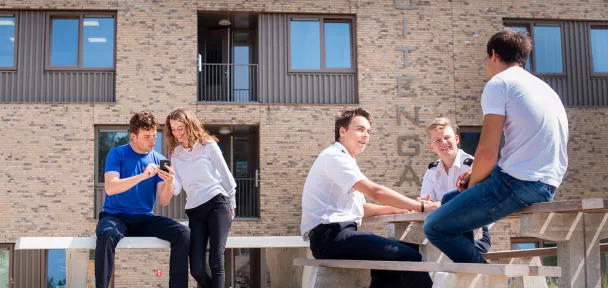Hydrographic surveying means measuring the physical features of surface waters. It is used for safe navigation, the offshore and wind industry but also in civil engineering, oceanography and water and sea management. You will learn about positioning, tides and how to map underwater terrain. Through data acquisition and processing you will learn e.g. how to make a chart or predictions on currents and tides.
The minor is based on the international IHO S-5 standard. Certificates are issued stating the S5 competencies passed on which level. serving as proof of (continued professional) education for the professional assessment schemes in operation world-wide.
Minor content
Also, different topics might be interesting or relevant for students from different backgrounds. Therefore, the minor is set up so that all participants will at least study the general module ‘Operations and Applications’ (including a simulation game and field work at the end of the minor), and in addition choose at least 4 out of 6 elective modules which can be studied at two levels:
- Bathymetric and geophysical systems;
- Positioning systems;
- Oceanography, Tides and Geology;
- Land surveying and Geodesy;
- Data acquisition and processing;
- Management of Hydrographic Data.
Students may choose to study all 6 modules. Students wishing to apply to the internationally recognized Hydrographic Professional Accreditation Scheme will always need to present the competencies from all 6 modules from either prior education or this minor. Each module consists of two parts or levels: a part generally covering the corresponding IHO Cat-B competencies for students new to hydrography and a more advanced part covering the more extensive IHO Cat-A competencies for those who already have for example a recognized IHO Cat-B certificate or equivalent knowledge.
This minor is offered by Ocean Technology.
Structure of the minor
The 30 EC minor starts with an introductory period of 2 weeks at Terschelling in the Netherlands. During this period students do an aptitude test to determine current levels and preferences, as input for a personal learning plan. In this period also the ‘tender game’ will start, which leads to the practical project (field work) at the end of the minor.
Next is a distance learning period where the student can study from any location with a decent internet connection. Lectures will be taught online or the students will learn through E-learning / self-guided work with frequent (bi-weekly) meetings with a lecturer for questions, feedback, or obtaining additional (theoretical) knowledge. In this period students also work on their practical project as a survey team, discussing requirements and writing (tender) documentation. Half way the period there is an individual feedback session to discuss the progress of work and give the student feedback, feed-up and feed forward on their specific work and study track.
At the end of the minor the students return to Terschelling for 3 weeks of practical work and tests. This includes a (short) practical surveying project. At the end of the practical work there will be a series of tests. During the practical work the students will bring into practice all the topics / modules they have covered during the distance learning period. Where possible practical tasks build on assignments completed during the distance learning period or are a repeat with ‘real’ data of those tasks.
Study features
The minor is assessed based on the results of the modules followed. Each module is 6EC and at least 5 modules have to be followed (the mandatory Operations and Applications module + 4 elective modules). Practical aspects are assessed as part of the Operations and Applications module.
Depending on the module and level chosen, the modules are assessed using one or more of the following:
- Portfolio including both technical skills as well as soft skills
- Tender and associated documentation for the practical project
- Written exam
- Assignment
The minimum requirements are:
- Mathematics and/or physics at higher secondary education level (Dutch: HAVO / VWO) or having completed the first year of studies in a technical subject at Bachelor or Master level.
- European Computer Driving License or equivalent ICT knowledge.
- Command of the English Language at a minimum of IELTS 6 or CEFR B2 (Cambridge B2(A)) or having completed the first year of studies in English at bachelor of Master level.
- For those who wish to upgrade theoretical competencies to a Category A level: having followed a recognized IHO-FIG-ICA Category B course or equivalent theoretical knowledge
This minor might be applicable to students entering from the following routes:
- University of Applied Sciences (Bachelor minor):
- Geo-ICT / Geo Media & Design / Geomatics / ICT
- Coastal and sea-management / Land- and water management/ Water management
- Civil engineering
- Maritime Officer
- Applied sciences
- Professionals working with hydrographic data
- Professionals holding a IHO-FIG-ICA Category B (with practical experience)
Students will gain knowledge of hydrographic surveying at a level that will allow them to at least discuss the topic with hydrographic surveyors. It will also aid them in obtaining professional recognition.




